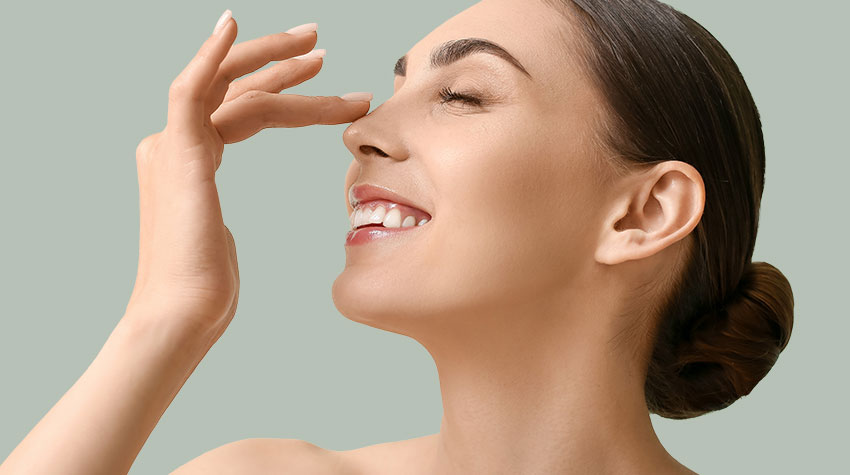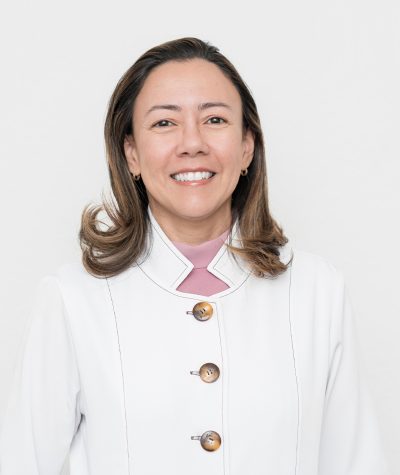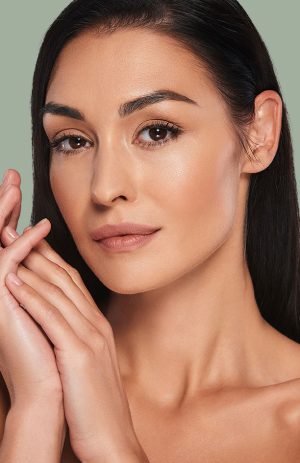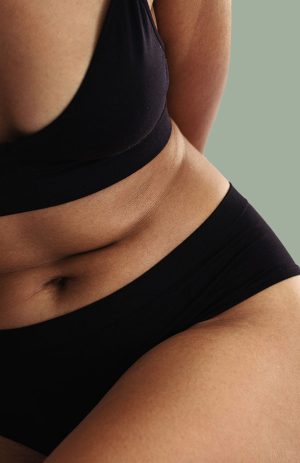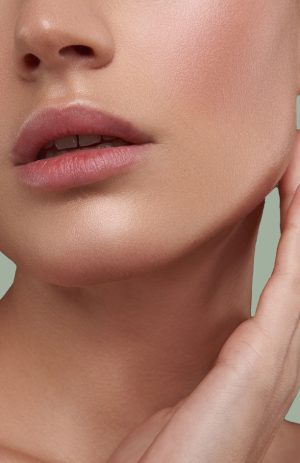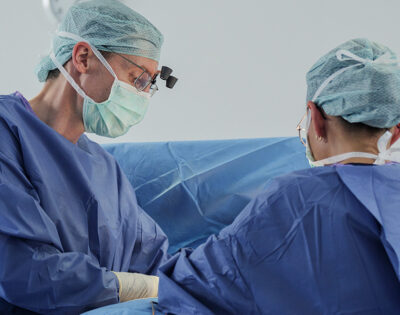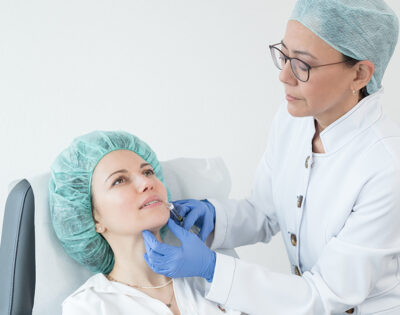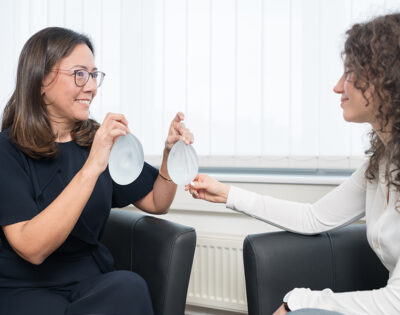Nose correction without surgery: a beautiful profile with hyaluronic acid
A rhinoplasty without surgery is a hyaluronic acid injection to refine small irregularities in the nose. The nose is the focal point of the face and has a decisive influence on the visual appearance due to its central position. If your nose becomes an aesthetic problem, it can cause a great deal of suffering. More and more people are opting for rhinoplasty with hyaluronic acid in order to achieve a better quality of life. Are you also dissatisfied with your side profile? Are you bothered by a bump on your nose but rule out surgery? Do you want a nose that you feel comfortable with? We can offer you treatment in Saarbrücken.
Injecting the nose with hyaluronic acid can have the following benefits:
- Professional advice
- Pleasing yourself again
- Increase attractiveness with a harmonious side profile
- A short treatment with a big effect
What our patients say
Information at a glance
Duration of treatment
30 minutes
Aftercare
none
Anesthesia
Anesthetic cream / vibration anesthesia / local anesthesia
Thread tension
no
Hospitalization
Outpatient
Socially acceptable
immediately
Costs
Additions or alternatives
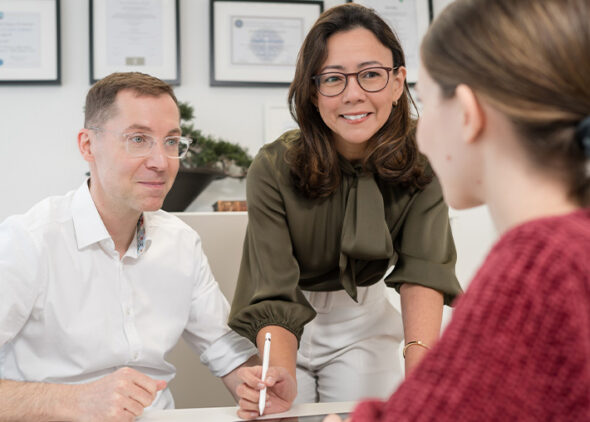
When does rhinoplasty without surgery make sense?
The technique is ideal for patients who dream of a nose that is perfect in their eyes and want to get a temporary visual impression of the changes that a nose job could bring about.
The procedure is also suitable for patients who still have minor irregularities after a nose operation. In recent years, rhinoplasty with hyaluronic acid/filler has become a popular alternative to surgery for a beautiful nose due to its safe technique and minimal downtime, which promises particularly fast results.
Patient satisfaction after rhinoplasty without surgery is over 94 percent 1 . The technique works or is particularly suitable for correcting humps, nose tips, slight asymmetries, a saddle nose or a broad nose.
When is rhinoplasty without surgery not advisable?
Pronounced malformations or malpositioning of the nose, such as a crooked nose, cannot be corrected by non-surgical rhinoplasty. In the case of a crooked nose, the bony structure of the nose and the nasal septum must be straightened. To significantly reduce or narrow the nose, excess cartilage must be removed.
In minimally invasive rhinoplasty without surgery, on the other hand, hyaluronic acid is injected, i.e. volume is added to compensate for unevenness or to enhance contours. We do not recommend hyaluronic acid treatment after multiple rhinoplasty operations. Previous surgical procedures can change the blood circulation of the skin.
Even a slight stretching of the skin due to the injection can lead to a circulatory disorder in these cases. Injections should not be carried out in the case of pregnancy or concomitant illnesses, in particular coagulation disorders.
Rhinoplasty without surgery versus rhinoplasty
Each treatment method has advantages and disadvantages that must be carefully weighed up against each other. The most important step towards a satisfactory treatment result is the selection of the appropriate treatment. For this, an aesthetic plastic surgeon should have many years of experience in performing rhinoplasty with or without surgery. Correction without rhinoplasty differs from rhinoplasty in the following ways:
- Hyaluronic acid can only correct certain malformations of the nose (minor changes).
- You do not have to plan any downtime for a rhinoplasty without surgery.
- The treatment is shorter than surgical rhinoplasty.
- The result can be reversed within a short time if you are not satisfied.
- Hyaluronic acid injections leave neither internal nor external scars.
- The costs of rhinoplasty without surgery are significantly lower.
- The risks of hyaluronic acid injections are much lower.
- Nose correction without surgery is painless to painless and does not require anesthesia.
- The result lasts for over a year, but unlike surgical rhinoplasty, it is not permanent.
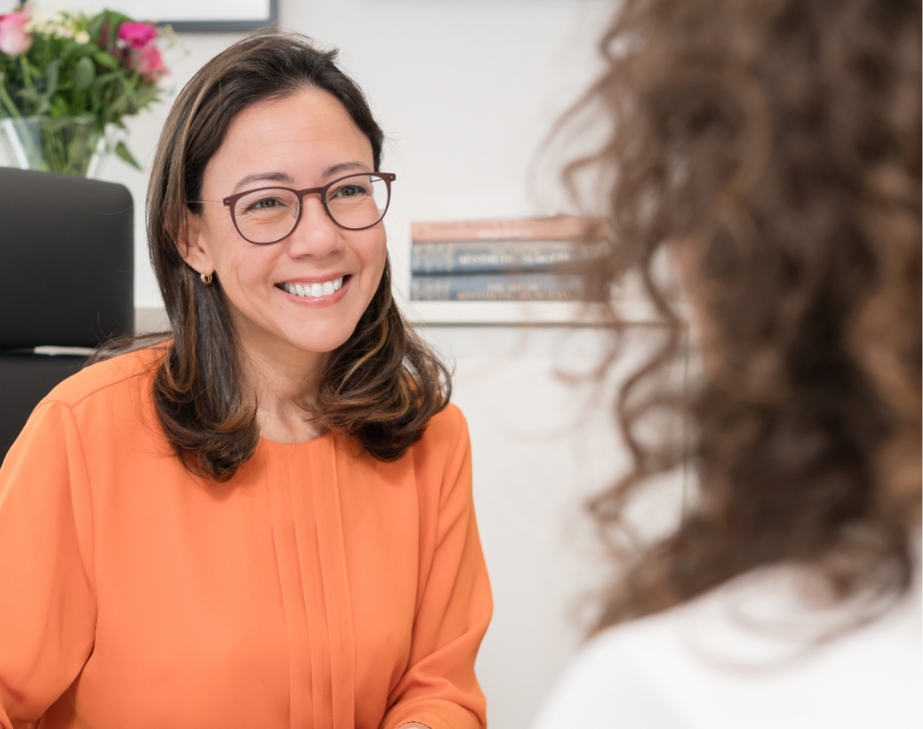
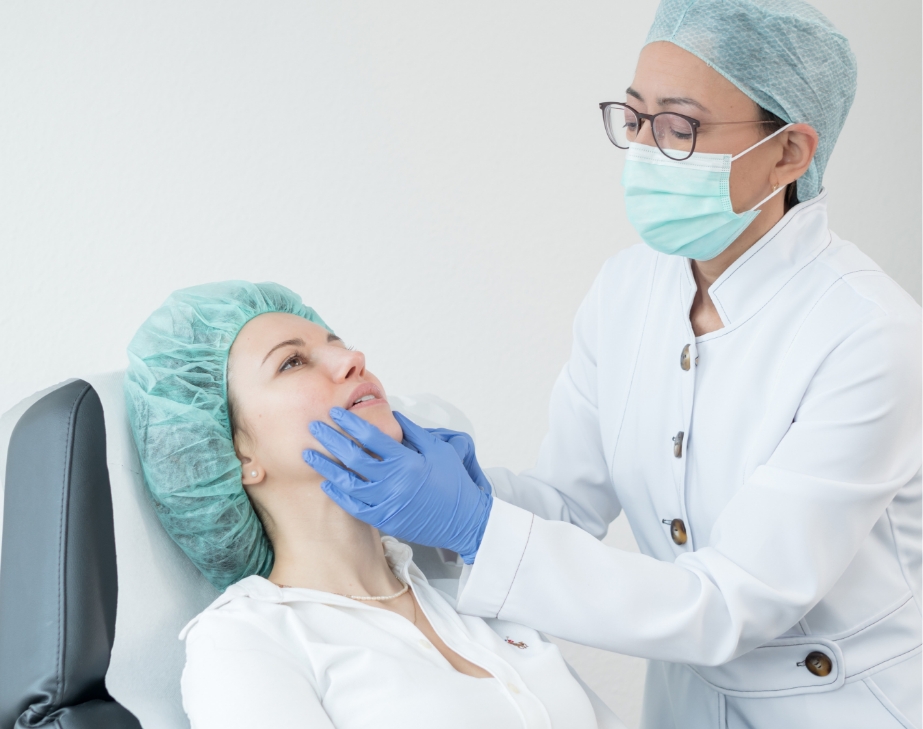
Correction of nasal humps or saddle noses without surgery
Hyaluronic acid can improve the shape of the bridge of the nose. The gentle symmetrical lines of the bridge of the nose, which extend from the eyebrows to the tip of the nose (“brow-tip aesthetic line” or “dorsal aesthetic line”), become more harmonious. Small nasal bumps can be treated well with hyaluronic acid injections. To create a straight bridge of the nose, the filler is injected above and below the hump. In the case of a saddle nose, the depression is injected with hyaluronic acid to raise the bridge of the nose.
Slightly firmer hyaluronic gels (high modulus of elasticity: G’) with high cohesion (cohesiveness) and a high degree of cross-linking are suitable for the bridge of the nose. Juvéderm® Voluma™, Juvéderm® Ultra 3 or Juvéderm® Volux™ from Allergan or Teosyal RHA®4 from Teoxane are suitable for correcting the bridge of the nose (e.g. in the case of a flat nose).
The hyaluronic acid fillers are carefully injected near the nasal cartilage in the midline. After the small injections, the skin is gently massaged to restore an optimally even contour. One to two weeks after the injection, we will examine your nasal contours in order to perfect the treatment result as part of a further treatment if necessary. Large nostrils can be reduced by injecting the nostrils.
Correction of the tip of the nose and slight asymmetries without surgery
In many people, a drooping nasal tip is intensified when laughing. The cause of a drooping nasal tip is often poorly developed nasal cartilage. When laughing, a small muscle below the nasal septum pulls the tip of the nose downwards (depressor septi nasi muscle), while another muscle lifts the nostrils (levator labii superioris alaeque nasi muscle). The precise injection of small amounts of hyaluronic acid can correct a drooping nasal tip through various mechanisms:
- The injected hyaluronic acid supports the cartilage of the nostrils and prevents the tip of the nose from drooping.
- The injection of hyaluronic acid underneath the muscle that pulls the tip of the nose downwards reduces muscle tension. The tip of the nose can also be lifted by relaxing the muscle of the nostrils (levator labii superioris alaeque nasi muscle) with a muscle relaxant.
- The contour of the tip of the nose is refined with targeted injections of high-quality fillers. Changing the tip defining points of the nose makes the nose appear shorter or longer.
- The alignment of the nasal root creates harmonious proportions and an esthetic contour of the bridge of the nose.
Hyaluronic acid gels that are firm (high modulus of elasticity: G’) and thin (low modulus of viscosity: G”) and can still be shaped after the injection (e.g. Juvéderm® Ultra 3) are suitable for the tip of the nose.

Rhinoplasty with calcium hydroxyapatite (Radiesse®)
Calcium hydroxyapatite is a tissue filler with similar applications to hyaluronic acid and is marketed under the name Radiesse®. Compared to hyaluron, calcium hydroxyapatite is significantly firmer (higher modulus of elasticity G’) and significantly more viscous (viscosity modulus G”). Calcium hydroxyapatite also consists of the same chemical building blocks as human bone. These properties make Radiesse® particularly suitable for contouring the bone contours of the cheeks, temples, chin-jaw contour and nose. Calcium hydroxyapatite stimulates collagen formation. The results are longer lasting with this product compared to hyaluronic acid. Nevertheless, Radiesse® has certain disadvantages that must be carefully weighed up. calcium hydroxyapatite cannot be dissolved by another active substance.
Hyaluronic acid, on the other hand, can be reliably broken down by injecting an enzyme (Hylase®). The risks associated with the use of calcium hydroxyapatite are higher than with hyaluronic acid. This relates in particular to the risk of inflammation and the formation of palpable nodules 2 .
Nose correction with muscle relaxants
A muscle relaxant can be injected alone or at the same time as a hyaluronic acid treatment to improve the appearance of the nose. Occasionally, a drooping nasal tip can be caused by a tense muscle under the nose (depressor septi nasi muscle). Another muscle that lifts the nostrils can reinforce this effect (Musculus levator labii superioris alaeque nasi). In these cases, the targeted injection of these muscles with two to four units of the active ingredient can lift the tip of the nose. The effect is comparable to the treatment of a gummy smile (gum smile) or bunny lines (nose wrinkles). The effect of the product is visible after seven to 15 days and lasts for around four to six months.
Rhinoplasty with autologous fat
Autologous fat treatment offers the advantage of permanent non-surgical correction. Unlike rhinoplasty with cartilage or bone correction, rhinoplasty with autologous fat can be performed under local anesthesia, without anesthesia and without long downtimes. Irregularities and asymmetries can be evened out with autologous fat. In particular, nasal humps or depressions in the bridge of the nose (saddle noses) can be corrected with autologous fat.
For a nose correction with autologous fat, around 25 milliliters of fatty tissue are removed from certain areas of the body. The fat is usually suctioned from the waist or abdomen under local anesthesia. The fat cells are cleaned, filtered and processed using a separation process. A few milliliters are carefully injected into the tip of the nose, the bridge of the nose or the root of the nose using fine cannulas.
One disadvantage of autologous fat treatment is that a certain percentage of the injected volume slowly decreases over the first few weeks. In younger patients and non-smokers, more fat cells generally heal than in older patients and smokers. The permanent results of the treatment become apparent in the second to third month after the injection.
In the event that further improvement is possible with an injection, the procedure can be repeated. Fat cells react to changes in lifestyle by changing their size. This property remains and can theoretically influence the treatment result in the event of drastic changes in body weight. The autologous fat treatment is suitable for treating various areas of the human body, including the eyebrows, eyelids, cheeks, lips, chin, jawline and temples.
Procedure for rhinoplasty without surgery

Preparation
Selecting the appropriate treatment method to fulfill your desire for change is the first and most important step towards a satisfactory result. During the personal consultation and examination, all circumstances that may affect the result (previous operations, skin thickness, cigarette smoking) are taken into account.
Before each treatment, Dr. Santos Stahl therefore examines the nose from different angles.
The shape of the nose and nasal breathing influence each other. It is therefore important to assess the nasal septum and turbinates before changing the shape. After discussing the possibilities and limitations of different treatment methods with you, the treatment plan is drawn up. Many patients request an injection immediately after the consultation. In these cases, an anesthetic cream is first applied for about thirty minutes.

The treatment
The nose is then carefully disinfected with an alcohol solution. The treatment areas are often marked with a sterile pen before the injection. Different injection techniques are used at the root of the nose, the bridge of the nose or the tip of the nose. The various areas of the nose are then treated in a systematic sequence. After the injection, the nose is gently massaged to distribute the hyaluronic acid evenly.
Afterwards, we will discuss with you all the special features that you should be aware of after a hyaluronic acid treatment of the nose. Of course, your attending physician is always available for you in an emergency.
Finally, you will receive a treatment passport with the batch designations and suggested dates for checking the results. By observing these quality standards, we meet the highest demands.
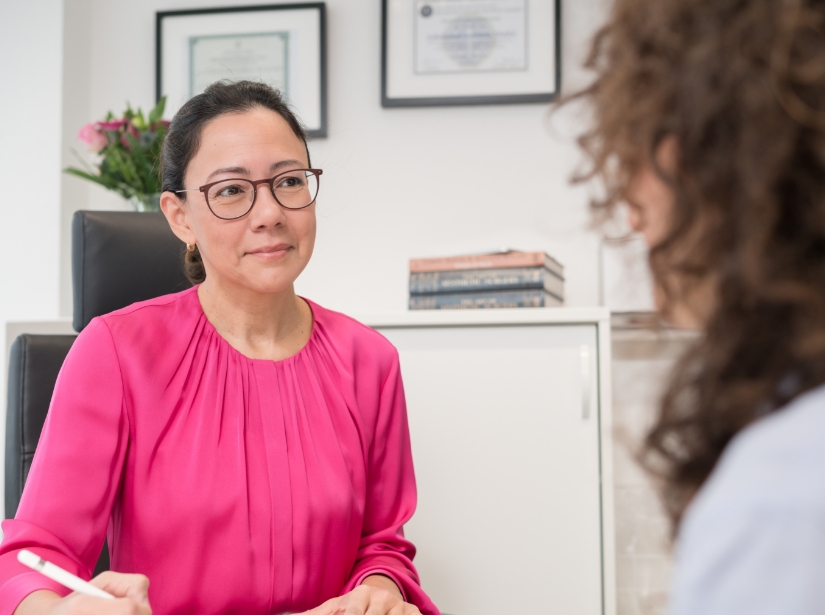
After the treatment
- The shape of the nose can still change in the first few days by massaging the skin. We therefore advise you not to massage your nose yourself.
- Glasses should not be worn for the first week after the minimally invasive treatment, as the glasses could cause pressure points.
- Cleanse your face as usual at the earliest six hours after treatment. Applying make-up to the small puncture wounds of the injection carries a small risk of inflammation and should therefore be avoided for the first 24 hours.
- Endurance sports can increase the tendency to swell in the first few days and should therefore be stopped for two to three days to avoid small bruises. For the same reasons, we advise against taking a sauna and sunbathing in the first two weeks.
- Please do not use cooling pads, as this could lead to reduced blood flow to the skin. You should therefore also avoid skiing for the first two weeks.
- Certain painkillers such as Aspirin®, Voltaren® or Diclofenac® impair blood clotting. Provided there are no intolerances, other pain medication is preferable if necessary.
- Many patients rely on the decongestant effect of arnica or bromelain. As there is currently insufficient scientific evidence of any significant benefit from these herbal medicines, we do not recommend them to you 3 .
- Smoking a cigarette has already been proven to reduce blood flow to the skin. This means that your skin is supplied with less oxygen, fewer nutrients and fewer defense cells. This can promote inflammation. The longer you stop smoking, the better for your health and your complexion.
- Immediately after treatment, there may be slight swelling and redness or itching in the treated area. After 24 hours, these symptoms disappear by themselves. Please contact us immediately if sudden pain occurs or increases a few hours after the injection.
Risks of rhinoplasty without surgery
A rhinoplasty without surgery is a safe treatment and therefore a gentle rhinoplasty. The complication rate of hyaluronic acid treatment of the nose is generally around 0.77 percent 4 . Temporary slight redness and swelling are the most common side effects of hyaluronic acid treatment. After one to five days, the redness and swelling disappear on their own in most cases.
If the skin is very thin, the hyaluronic acid used can create a blue shimmer (Tyndall effect). As the injected hyaluronic acid dissolves, the skin discoloration disappears. In rare cases, in about two percent of cases, bruising may occur. Inflammation can occur in 0.04 percent of cases. A disturbance of blood circulation with damage to the skin is observed in 0.06 percent of patients 5 .
As a rule, fewer complications are to be feared in young, healthy non-smokers without previous nose surgery than in older patients, smokers, patients with previous illnesses or with previous nose surgery. The scar tissue after a nose operation means that the skin is less flexible and the tissue layers are distorted. The blood supply to the skin may be reduced. It may therefore be necessary to split the injection into two or three treatments.
The risk of impaired vision after rhinoplasty with filler cannot be accurately estimated (probably less than 1:10,000). Every year, around 3 to 4 million people worldwide are treated with hyaluronic acid 6 . This compares with 34 reported cases of visual impairment following rhinoplasty without surgery over a period of approximately 10 years 7 .
Experience report of a nose correction without surgery
Before patients decide on a rhinoplasty without surgery and choose a suitable, experienced specialist for the treatment of their nose, they search the Internet for testimonials on rhinoplasty. It is best to visit our collection of experience reports, which bundles everything on this topic.
Before and after pictures of a rhinoplasty without surgery
In the run-up to an initial treatment, patients often want to see before and after photos of a rhinoplasty without surgery that the practice has performed. Centerplast also offers the option of being shown before and after results. We would be happy to present these to you in a personal consultation.
Frequently asked questions
The limited duration of action of hyaluronic acid is an advantage for certain patients who have doubts about the success of a rhinoplasty. Hyaluronic acids are often used on the nose, as they are more long-lasting due to their properties (e.g. concentration and degree of cross-linking). The properties of the injected tissue also affect the durability of the results.
Due to the minimal muscle movements, the effect of fillers on the nose is more permanent than on the lips, for example. The results of hyaluronic acid injections in the nose can last up to 2 to 3 years. We recommend a check-up visit for your “new nose” after about a year. Of course, a follow-up injection can be carried out at any time if necessary. A permanent correction of the nose can also be achieved with autologous fat or a nose operation.
A crooked nose is usually caused by a deformation of the nasal septum or the bony framework. Only slight irregularities can be corrected with a hyaluronic acid treatment. Nose surgery is suitable for straightening a nose, in which the shape of the nasal root, the bridge of the nose, the tip of the nose, the nostrils and the columella can be optimally corrected.
The training and experience of the practitioner have an influence on the result. Your doctor should be able to inform you about all treatment options. The possibilities of rhinoplasty without surgery differ from the goals that can be achieved with surgery. In order to provide you with the best possible advice, the doctor should have experience in performing corrections with and without surgery. Aesthetic treatment is a medical treatment, but the ENT specialist is not responsible for such procedures, even if the name might mistakenly suggest it. As with any medical treatment, your safety should be a top priority. Therefore, the cosmetic surgery expert should have good anatomical knowledge and skills in identifying and treating possible side effects. At CenterPlast, your safety is our top priority. The plastic-aesthetic doctors take the following precautions for this:
- The filler is injected where no vessels are expected.
- The hyaluronic acid is injected carefully, gently and without pressure by experts in aesthetic medicine.
- To prevent the filler from accidentally entering a vessel, special cannulas are used and the hyaluronic acid is introduced as the syringe is withdrawn (in a retrograde manner).
- Close observation of the skin circulation after each injection.
- The necessary medication for the treatment of risks is always available.
Before a hyaluronic rhinoplasty with filler is performed, it is essential that the treating doctor performs an examination, provides information and draws up a treatment plan in order to determine the exact costs. The cost of the service is calculated on the basis of the amount of hyaluronic acid injected. You will receive a detailed offer for cheek augmentation during an individual consultation. We will also be happy to provide you with information on the options for financing interventions.

AUTHOR
Dr. Adelana Santos Stahl
Our aim is to offer optimal, discreet and precise treatment based on our extensive expertise in the field of plastic surgery.
Dr. Adelana Santos Stahl has a unique international perspective with a female view of plastic surgery. Your individual and detailed approach is the key to the beautiful and natural results. Having trained in Brazil, one of the largest and best-known countries for aesthetic and reconstructive plastic surgery, she understands her patients’ desire to look and feel their best.
She completed her medical studies and training as a specialist in plastic and aesthetic surgery in Brazil. In 2009, she also successfully passed the German equivalence examinations for the state medical examination.
Two years later, in 2011, she received the German and in 2012 the EU specialist certification (EBOPRAS) for plastic surgery. From 2009 to 2013, she deepened her knowledge of aesthetic and reconstructive facial surgery with world-renowned representatives of plastic surgery such as Professor Gubisch at the Marienhospital and Madame Firmin in Paris.
A VDÄPC Fellowship (continuing scholarship for graduate students) in Switzerland, France and the USA has further enriched her professional experience. Dr. Santos Stahl is active in various renowned professional associations. In addition to the DGPRÄC and DGBT, she is also a member of the Brazilian Society of Plastic Surgery – SBCP.
She is also the author of several scientific articles and, together with her husband, is dedicated to research and clinical studies in the field of plastic surgery.
She has been based in Saarbrücken since 2019.
- Williams LC, et al., 2020, Plast Reconstr Surg. ↩︎
- Williams LC, et al., 2020, Plast Reconstr Surg. ↩︎
- de A C Almeida R, et al., 2019, Int J Oral Maxillofac Surg; Lee HS, et al., 2017, Eur Arch Otorhinolaryngol ↩︎
- Williams LC, et al., 2020, Plast Reconstr Surg. ↩︎
- Harb A, et al., 2020, Plast Reconstr Surg. ↩︎
- ISAPS, 2019 Global Statistics ↩︎
- Williams LC, et al., 2020, Plast Reconstr Surg. ↩︎
You might also be interested in
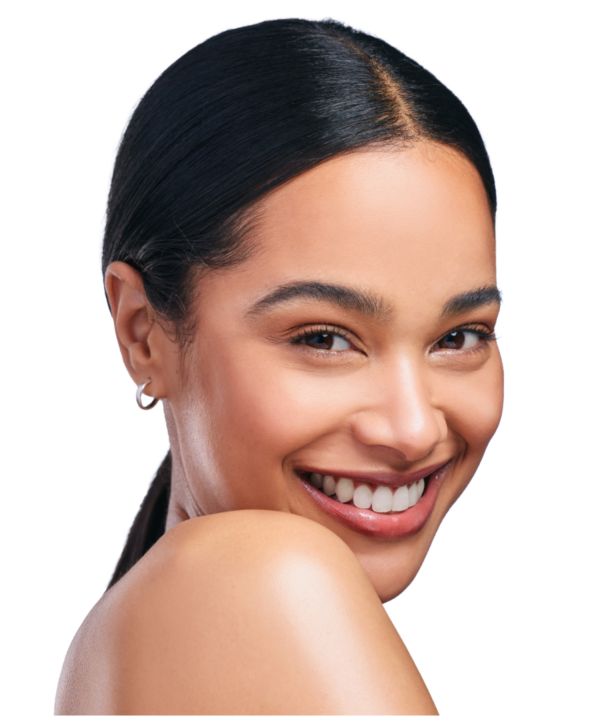
Personal advice
We take time for you and offer you customized advice and treatment for your individual result.
